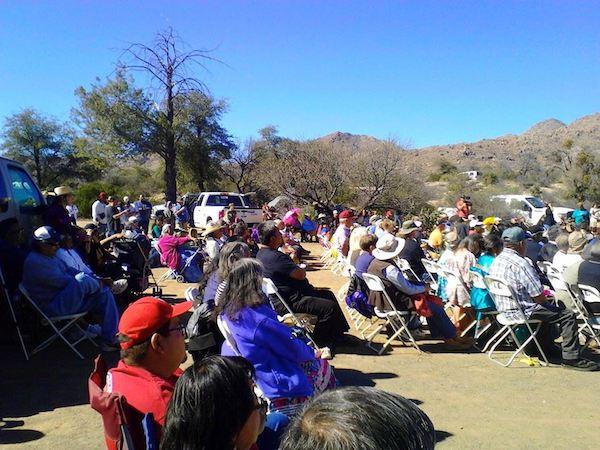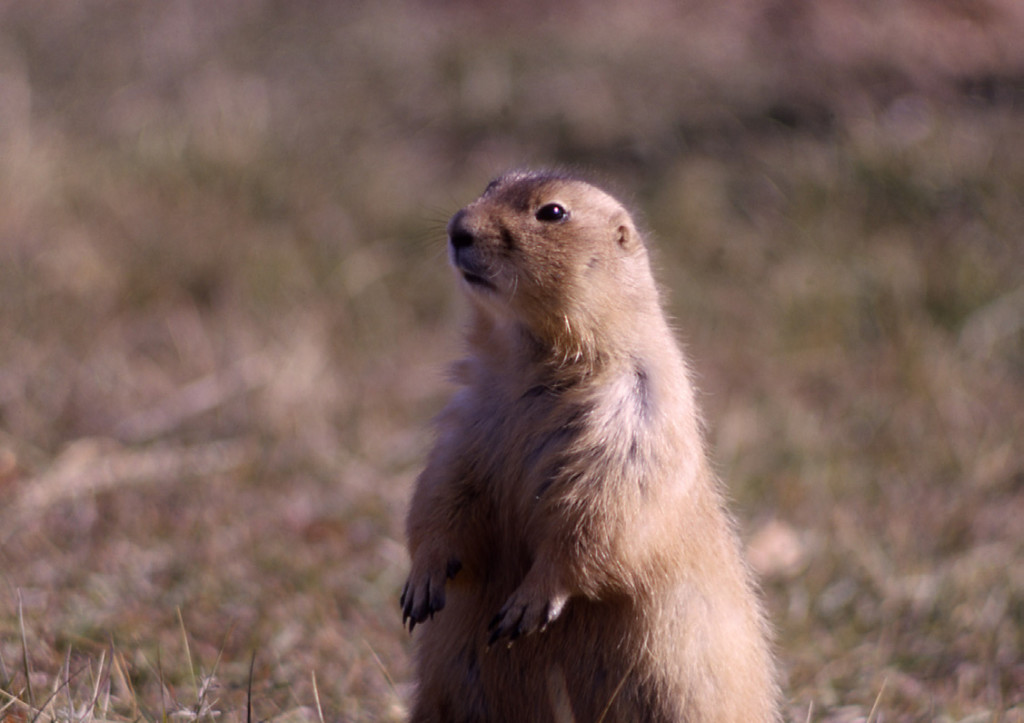
by Bellmeadow, Deep Green Resistance Member
Recently I heard news that our county (Douglas) was getting one of the nation’s biggest malls. The news simultaneously sunk my heart and angered me. Why the hell do we need another mall? To consume the world? Then my mind raced to the location of the mall, and the prairie dogs that live there. I had been worried about this colony before, about the strong possibility that the remaining colonies comprising hundreds of prairie dogs would be destroyed for some kind of development. After all, a Lowe’s store, an outlet mall, a housing project, and a tire store had occupied their territory and had already killed thousands of these dogs in the name of “development.” And this was the final solution for the 3,000 to 8,000 remaining burrows: complete annihilation of the prairie dogs for a shopping mall set to cover 170 acres in concrete.
Once the news sunk in, I called the town of Castle Rock, where the new mall is slated to be developed and spoke with the government official in charge of the construction. I was given the contact information of the individual working with Alberta Development (the development company constructing the mall) on the prairie dog “problem.” She was kind and helpful, as developers are trained to be when it comes to dealing with “pesky environmentalists” and let me know that the current plan for the prairie dogs was to cage them, kill them, and send them off to the nearest raptor farm to feed the birds. All the dogs. Hundreds of prairie dog families sucked up out of their only homes, caged, killed, and fed to the raptors. She informed me they had tried to find new places for them to be relocated, but had no success, so this was the only possibility left for the prairie dogs. She extended an invitation to help her find relocation areas with assurance that if we found a place, they would cover the costs for the relocation and support us in any way they could to make that transfer happen. All I needed to do was find private land owners in Douglas County who were willing to have prairie dogs on their land. I knew that in our county, it would not be easy to locate such land owners. Ranchers and conservatives have a long history of deep-seated hatred for these animals as they perceive prairie dogs as a nuisance and a threat to their cash herds and crops. Landowners by and large are perfectly willing to accept prairie dog extermination as good business practice.
Grabbing my camera, my next plan of action was to visit these prairie dog families and spend some time with them, to witness what was happening with the development of the mall. As I drove past the thousands of burrows, my heart was racing and sadness pulsated through me. I found a good spot to pull over and started to listen and watch as I walked among the dogs. Individual scouts were sitting on top of their burrows chatting away, relaying information to their families below. People studying prairie dogs have found that the colonies have their own distinct languages and dialects and have different words for coyotes, hawks, snakes and humans. They even distinguish between the different colors of shirts people are wearing. As I watched them chatting, I was imagining what it was they were communicating to each other. I assumed they were sharing that a scary person holding a strange contraption was encroaching on their homes and they were taking their necessary precautions. After all, it was just a couple weeks before when Alberta Development created a rock crushing area that destroyed hundreds of homes and buried their neighbors alive.
As I walked among their colonies, their alert calls became louder and several of them sat on top of their burrows with tails wagging in tune to their chattering warning calls. As I watched, they started to get used to me and stopped being on high alert. I could see them stretching out on the top of their homes and several of them were in pairs and were hugging and kissing each other while they were basking in the sun. One of the dogs wobbled towards me in a brave and playful manner until he lost his bearings and decided to race back to his friend for comfort. As I watched these families and friends rolling, eating, singing and calling out warnings, trucks, heavy equipment and one car after another raced around them with deafening roars. It didn’t require much imagination to understand how stressful and terrifying it must be to live in this chaos and danger every day, to be forced to witness friends and family being smashed by giant, smoking machines, to be evicted to far corners of their world, the only places left to survive, constantly uprooted by the encroachment of a “civilized” human world where malls and parking lots take priority over the living biomes of multitudes of diverse lives. This fate is what is left for all of them, despite their ability to thrive on the land for generation upon generation.
Prairie dogs are an essential component of the health and biodiversity of the prairies and are considered keystone species, meaning they are essential to the balance of prairie life. The biodiversity that exists in these biomes cannot remain in healthy balance without their existence. There are at least 170 known species that are dependent on the prairie dogs for survival and when the prairie dogs are removed from these areas, those other species can no longer survive and the prairies lose their biodiversity. Prairie dog colonies are the preferred grazing areas for ungulates; the nutrient-dense plants that grow there are a result of the dogs digging up nutrients that become readily available for the plants to absorb. Contrary to myth, there has never been one documented case of an animal being so ignorant as to step into their burrows.
Before the rise of the consumerist culture on this continent, prairie dogs were densely populated throughout the prairies. The largest known colony covered 25,000 square miles and was home to perhaps 400 million prairie dogs. The total range was about 150,000 to 200,000 square miles and the population of the prairie dogs was well over a billion. The colony here in Douglas County is now one of the largest on the Front Range, and consists of between 3,000 and 8,000 burrows covering approximately 150 acres. The prairie dogs are now reduced to three percent of their range and less than one percent of their population and are truly an endangered species, but are not labeled as such because of their inappropriate status of “pest.” Such labeling makes it easy for otherwise squeamish developers to do the dirty work associated with their elimination, and to sell this practice to the uninformed.
After my visit with the prairie dogs, I contacted the developer to inquire what my timeline was for finding a relocation spot. The developer informed me (in late November) that we had to find a home for them no later than late March. However, in working with the Prairie Dog Coalition of the Humane Society of the United States, I learned that relocating prairie dogs any time before June is problematic and carries a lower success (survival) rate. Female prairie dogs spend the better part of the fall and winter preparing for their babies by building a nesting room in their burrows. After months of working on these nests, they get pregnant in January and February. After giving birth, females tend to stay down inside their burrows until April to May, once their babies are mature enough to come out of their nests. If the colony is disturbed after they have had their babies between March and May, the babies and the mothers will be buried alive because they do not leave their nest area. This is why Colorado Parks and Wildlife doesn’t give permits for relocation to take place until June 1st.
The ground is also cold and often frozen in Colorado at this time of the year with little edible vegetation, making the chances for relocation success even slimmer. This is compounded by the trauma prairie dog families and friends experience from being sucked out of their burrows and spewed into cages, then transported (if they even survive that far) to an unfamiliar area leaving all these vulnerable animals terrified, traumatized and separated from their relatives, which is alone enough to kill them. Further, they face the dangers of being buried alive in burrows, crushed under the wheels of construction machinery, or being killed for sport by bored workers, spectators, or trespassers. Prairie dog relocation is harsh enough in a “good” time of the year, but in March the chances for their survival are bleak indeed. If these prairie dogs are to be given any reasonable chance to live, our priority is to convince Alberta Development to wait until June so we have time to find a relocation spot where they will have a chance to survive.
I once again head back to the remnant of what was once a vibrant prairie dog colony to contemplate the next steps I should take to ensure their survival. I see the thousands of burrows and hundreds of dogs spread across the landscape, surviving against the odds of a culture hell bent on destruction. The sun beams down on their homes and they start to chatter and run back and forth across the ground, to their burrows. All around them I see the construction starting to take place: the large dirt mounds, the huge trucks rolling back and forth, the rock crushing area that recently buried hundreds of them alive. What words did those families share with each other as their world turned dark, as they desperately sucked in their last breath of air as the oxygen left their burrows? What will the remaining families communicate as the machines of death dump concrete over their only homes? Will they have words for their holocaust? What words will they use if they are sucked up into cages only to be euthanized and fed to raptors? How will the mothers deal with the loss of their children from whom they are separated in transport, if in fact they are not killed along the way? All these thoughts race through my head and continue to do so.
All for a shopping mall. A mall we don’t need and don’t even pretend to. But life wants to live and these dogs need this land. They need a place that will sustain them and future generations. And the prairies need these animals. The hawks need them, the coyotes, the fox and the black-footed ferret. We need these animals, whether or not we choose to see it. We need private landowners who are willing to bring these creatures onto their land, not as a work of charity or penance for sins imagined or real, but to improve the biodiversity of the prairies. We need to fight for the prairie dogs, because they cannot fight against the machines paving their homes with concrete to erect more malls that are continuously failing in our current economy. The fate of these dogs rests with us, and it is not enough to stand by, wringing our hands as we witness yet another tragedy. We must stand together and put pressure on Alberta Development to, at the minimum, put off construction of “the nation’s biggest mall” until June in order to give these prairie dogs a chance at survival. And then we need to wake up to the understanding that prairie dogs are a keystone species on our prairies and begin to welcome them back home.











